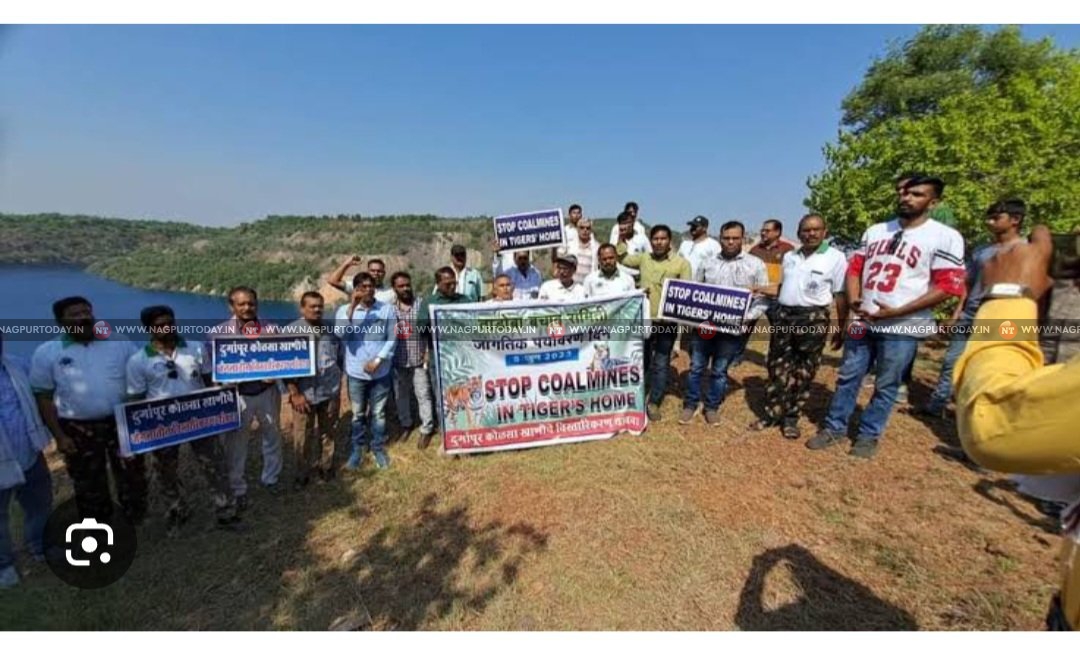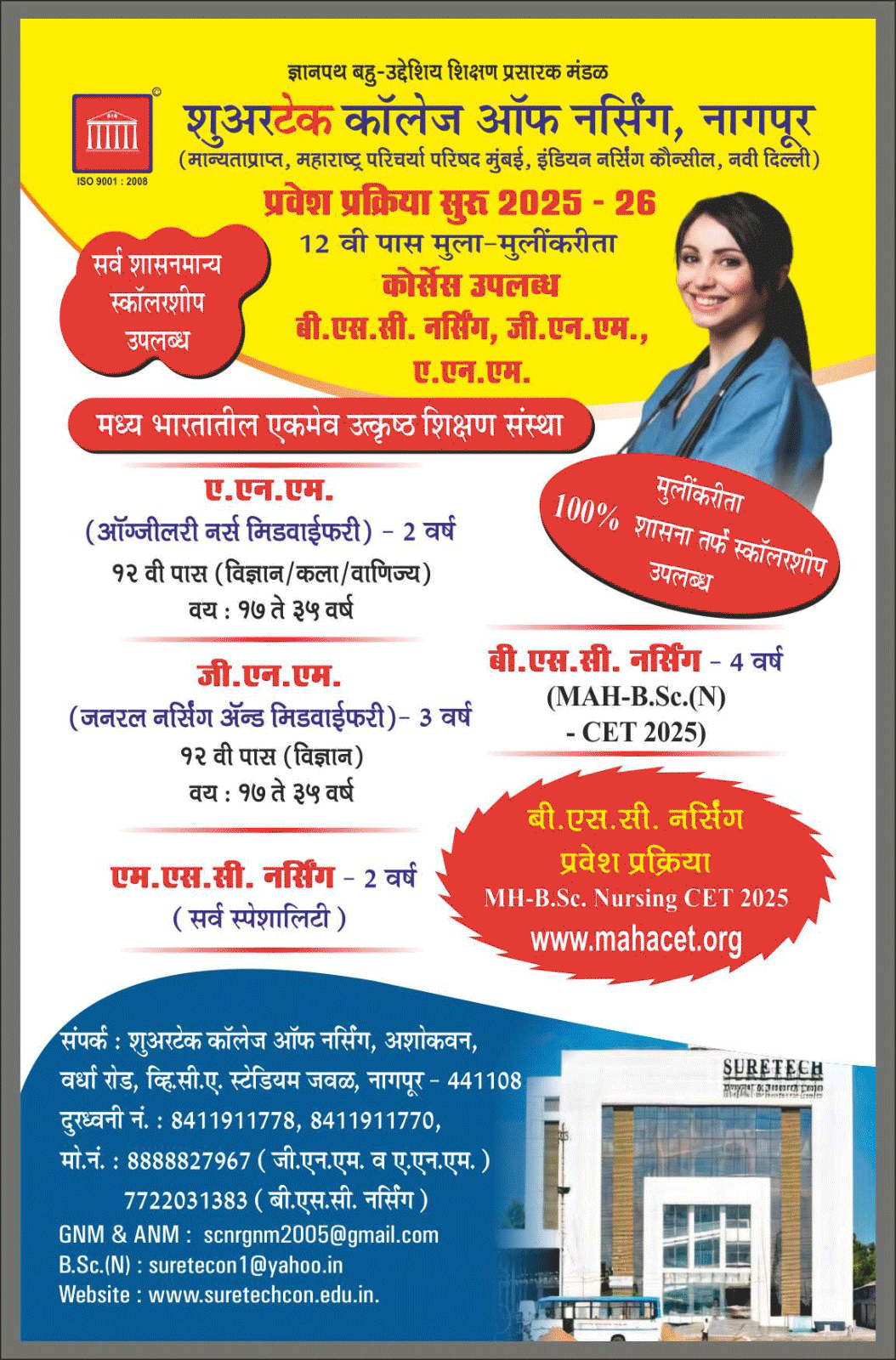
Nagpur: In a significant win for environmental conservation, the Nagpur Bench of the Bombay High Court has imposed a stay on tree felling in Tadoba’s buffer zone in Chandrapur district, offering temporary relief to approximately 60,000 trees and diverse wildlife, including tigers and leopards. The stay comes in response to a petition filed by Prakriti, a Chandrapur-based NGO dedicated to environmental protection, led by Dipak Bharatsingh Dixit.
Western Coalfields Limited (WCL), known for its destruction of Vidarbha’s environment and alleged illegal activities, had proposed an expansion of Durgapur Coal Mines at the expense of environment and wildlife.
The WCL had sought to divert 121 hectares of forest land in the buffer zone of the Tadoba-Andhari Tiger Reserve (TATR) for expansion of Durgapur Coal Mines. This area, only 12 kilometres from the Tadoba boundary, is home to a variety of wildlife species. The High Court’s bench, comprising Justice Nitin Sambre and Justice Vrushali V Joshi, directed WCL to halt tree felling and file a detailed reply to the Public Interest Litigation (PIL).
WCL plans to mine 15.20 MT of coal from the forest area, equivalent to 182 football fields. Out of 15.20 MT, WCL has already mined 7.20 MT of coal during the period 2005-2013, when it was granted formal forest clearance for 8 years. WCL says 8 MT of coal reserves are still to be mined and hence need extension.
Concerns raised by Prakriti
Prakriti’s PIL, filed in April 2024, highlights the adverse environmental and ecological consequences of the proposed project. The petitioner argued that the mine expansion would:
• Aggravate the ongoing man-animal conflict in Chandrapur.
• Degrade forests critical for wildlife habitation.
• Exacerbate environmental pollution in the region.
Dixit, through his counsel Mahesh Dhatrak, emphasized that the area already suffers from frequent human-wildlife conflicts. Official data obtained via the RTI Act revealed that in the last four years, nine human fatalities and ten injuries were reported due to wild animal attacks within a 20-kilometer radius of the Durgapur mines. Additionally, the region saw the deaths of a tiger and a leopard in 2022 and 2023, further underscoring the ecological sensitivity of the area.
Allegations against WCL
The NGO’s affidavit filed on December 4, 2024, accused WCL of violating its commitments. In 2022, WCL had given an undertaking to the government that tree felling would be undertaken only under unavoidable circumstances and strict supervision by the Forest Department. However, Prakriti’s recent spot visit revealed large-scale unauthorized tree felling in forest compartment number 400.
“There is no supervision by the Forest Department, nor are there any unavoidable circumstances justifying the tree cutting,” stated the petitioner.
Government and WCL’s stand
The Maharashtra Government had earlier recommended the diversion of 80.77 hectares of reserve forest land to the Ministry of Environment, Forest, and Climate Change (MoEFCC) for renewing the mining lease. Forest officials claimed the project has obtained forest and wildlife clearance, but the High Court’s directive now puts the project on hold.
WCL, which plans to extract 8 million tonnes of coal from the area, argues that mining is essential to meet energy demands. The company had previously mined 7.20 million tonnes between 2005 and 2013 under an earlier clearance. Despite these justifications, environmentalists argue that the ecological cost is too high.
Ecological and human impact
The diversion of sensitive forest compartments 400 and 401 is expected to further disrupt the region’s ecosystem. Vast areas of forest land previously diverted for coal mining near Chandrapur have turned into prosopis-dominated landscapes, unsuitable for herbivores but ideal for carnivores, escalating human-wildlife conflicts.
The petitioner also highlighted that mining activity leads to habitat destruction, forcing wildlife into human settlements. Data shows a consistent rise in incidents of big cats venturing into human-dominated areas around the Durgapur mines, posing threats to both humans and animals.
The High Court’s stay order has put the spotlight on WCL’s alleged disregard for environmental norms and its impact on Chandrapur’s fragile ecosystem. Environmentalists and local communities hope the legal intervention will prompt WCL to reconsider its plans and prioritize sustainable practices over short-term gains.
This case underscores the delicate balance between development and conservation, with Tadoba’s wildlife corridor emerging as a litmus test for environmental justice in the region.














